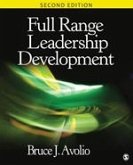- Gebundenes Buch
- Merkliste
- Auf die Merkliste
- Bewerten Bewerten
- Teilen
- Produkt teilen
- Produkterinnerung
- Produkterinnerung
A student-friendly text which enables students to appreciate the logic of descriptive and inferential statistics, and understand which techniques are best suited to which kinds of data or research questions
Andere Kunden interessierten sich auch für
![An R Companion for Applied Statistics II An R Companion for Applied Statistics II]() Danney Rasco (West Texas A & USA M University)An R Companion for Applied Statistics II84,99 €
Danney Rasco (West Texas A & USA M University)An R Companion for Applied Statistics II84,99 €![An R Companion for Applied Statistics I An R Companion for Applied Statistics I]() Danney RascoAn R Companion for Applied Statistics I84,99 €
Danney RascoAn R Companion for Applied Statistics I84,99 €![Introduction to Probability and Statistics for Data Science Introduction to Probability and Statistics for Data Science]() Steven E. Rigdon (Missouri Saint Louis University)Introduction to Probability and Statistics for Data Science64,99 €
Steven E. Rigdon (Missouri Saint Louis University)Introduction to Probability and Statistics for Data Science64,99 €![Full Range Leadership Development Full Range Leadership Development]() Bruce AvolioFull Range Leadership Development114,99 €
Bruce AvolioFull Range Leadership Development114,99 €![The Nature of Leadership The Nature of Leadership]() The Nature of Leadership180,99 €
The Nature of Leadership180,99 €![Student Study Guide to Accompany Statistics Alive! Student Study Guide to Accompany Statistics Alive!]() Wendy J. SteinbergStudent Study Guide to Accompany Statistics Alive!84,99 €
Wendy J. SteinbergStudent Study Guide to Accompany Statistics Alive!84,99 €![Data Visualization & Presentation With Microsoft Office Data Visualization & Presentation With Microsoft Office]() Valerie M. SueData Visualization & Presentation With Microsoft Office114,99 €
Valerie M. SueData Visualization & Presentation With Microsoft Office114,99 €-
-
-
A student-friendly text which enables students to appreciate the logic of descriptive and inferential statistics, and understand which techniques are best suited to which kinds of data or research questions
Produktdetails
- Produktdetails
- Verlag: SAGE Publications Inc
- Artikelnr. des Verlages: B94989C
- Seitenzahl: 448
- Erscheinungstermin: 23. Oktober 2012
- Englisch
- Abmessung: 266mm x 187mm x 30mm
- Gewicht: 1026g
- ISBN-13: 9781412994989
- ISBN-10: 1412994985
- Artikelnr.: 35062865
- Herstellerkennzeichnung
- Libri GmbH
- Europaallee 1
- 36244 Bad Hersfeld
- gpsr@libri.de
- Verlag: SAGE Publications Inc
- Artikelnr. des Verlages: B94989C
- Seitenzahl: 448
- Erscheinungstermin: 23. Oktober 2012
- Englisch
- Abmessung: 266mm x 187mm x 30mm
- Gewicht: 1026g
- ISBN-13: 9781412994989
- ISBN-10: 1412994985
- Artikelnr.: 35062865
- Herstellerkennzeichnung
- Libri GmbH
- Europaallee 1
- 36244 Bad Hersfeld
- gpsr@libri.de
Brett Pelham grew up as the second of six children near the small town of Rossville, Georgia. Brett received his B.S. from Berry College in 1983 and received his Ph.D. from the University of Texas at Austin in 1989. He began thinking about this book while teaching statistics at UCLA but got serious about doing so while teaching statistics at UB (in Buffalo, NY). After leaving UB, Brett worked for a year as a visiting professor in marketing at Georgetown University. He was then lucky enough to work for about two years as a senior research analyst at Gallup. This was followed by two not-so-lucky years as a Program Director at the National Science Foundation. At the time of this writing (in January 2012) Brett was extremely excited to have just taken a position promoting graduate and postgraduate education in the Education Directorate at the American Psychological Association. With apologies to Lenny Bruce, you can see that Brett has had some difficulties holding down a regular job recently. The bulk of his research focuses on automatic social judgment and self-evaluation. Over the past two decades, he has taught courses in social psychology, research methods, statistics, social cognition, and the self-concept. In his spare time, he enjoys juggling, sculpting, listening to alternative rock music, cooking, and traveling. His two favorite activities while completing this textbook (in late 2011) were spending time with his 3-year-old daughter Brooklyn and his 8-year-old son Lincoln. Along with his wife LJ Pelham, Brett is co-inventor of the recently released card game PRIME. Along with his son Lincoln, he is co-inventor of the soon-to-be-released card game Cliff-Hanger. Along with his daughter Brooklyn, he is co-inventor of the never-to-be-released card game It's a Hat. You Like It? His most recent writing project is a novel tentatively entitled Elvis 2.0, which focuses on scientific and religious problems associated with the apparent resurrection of Elvis Presley.
Chapter 1: A Review of Basic Statistical Concepts
Chapter 2: Descriptive Statistics
Chapter 3: Linear and Curvilinear Correlation
Chapter 4: Non-Parametric Statistics (Tests Involving Nominal Variables)
Chapter 5: Reliability (and a Little Bit of Factor Analysis)
Chapter 6: Single-sample and two-sample t-tests
Chapter 7: One-way and Factorial Analysis of Variance (ANOVA)
Chapter 8: Within-Subjects and Mixed Model Analyses
Chapter 9: Multiple Regression
Chapter 10: Examining Interactions in Multiple Regression
Chapter 11: ANCOVA, Covariate Adjusted Means, and Predicted Scores
Chapter 12: Suppressor Variables
Chapter 13: Mediation and Path Analysis
Chapter 14: Data Cleaning
Chapter 15: Data Merging and Data Management
Chapter 16: Avoiding Bias: Characterizing without Capitalizing
Chapter 2: Descriptive Statistics
Chapter 3: Linear and Curvilinear Correlation
Chapter 4: Non-Parametric Statistics (Tests Involving Nominal Variables)
Chapter 5: Reliability (and a Little Bit of Factor Analysis)
Chapter 6: Single-sample and two-sample t-tests
Chapter 7: One-way and Factorial Analysis of Variance (ANOVA)
Chapter 8: Within-Subjects and Mixed Model Analyses
Chapter 9: Multiple Regression
Chapter 10: Examining Interactions in Multiple Regression
Chapter 11: ANCOVA, Covariate Adjusted Means, and Predicted Scores
Chapter 12: Suppressor Variables
Chapter 13: Mediation and Path Analysis
Chapter 14: Data Cleaning
Chapter 15: Data Merging and Data Management
Chapter 16: Avoiding Bias: Characterizing without Capitalizing
Chapter 1: A Review of Basic Statistical Concepts
Chapter 2: Descriptive Statistics
Chapter 3: Linear and Curvilinear Correlation
Chapter 4: Non-Parametric Statistics (Tests Involving Nominal Variables)
Chapter 5: Reliability (and a Little Bit of Factor Analysis)
Chapter 6: Single-sample and two-sample t-tests
Chapter 7: One-way and Factorial Analysis of Variance (ANOVA)
Chapter 8: Within-Subjects and Mixed Model Analyses
Chapter 9: Multiple Regression
Chapter 10: Examining Interactions in Multiple Regression
Chapter 11: ANCOVA, Covariate Adjusted Means, and Predicted Scores
Chapter 12: Suppressor Variables
Chapter 13: Mediation and Path Analysis
Chapter 14: Data Cleaning
Chapter 15: Data Merging and Data Management
Chapter 16: Avoiding Bias: Characterizing without Capitalizing
Chapter 2: Descriptive Statistics
Chapter 3: Linear and Curvilinear Correlation
Chapter 4: Non-Parametric Statistics (Tests Involving Nominal Variables)
Chapter 5: Reliability (and a Little Bit of Factor Analysis)
Chapter 6: Single-sample and two-sample t-tests
Chapter 7: One-way and Factorial Analysis of Variance (ANOVA)
Chapter 8: Within-Subjects and Mixed Model Analyses
Chapter 9: Multiple Regression
Chapter 10: Examining Interactions in Multiple Regression
Chapter 11: ANCOVA, Covariate Adjusted Means, and Predicted Scores
Chapter 12: Suppressor Variables
Chapter 13: Mediation and Path Analysis
Chapter 14: Data Cleaning
Chapter 15: Data Merging and Data Management
Chapter 16: Avoiding Bias: Characterizing without Capitalizing








